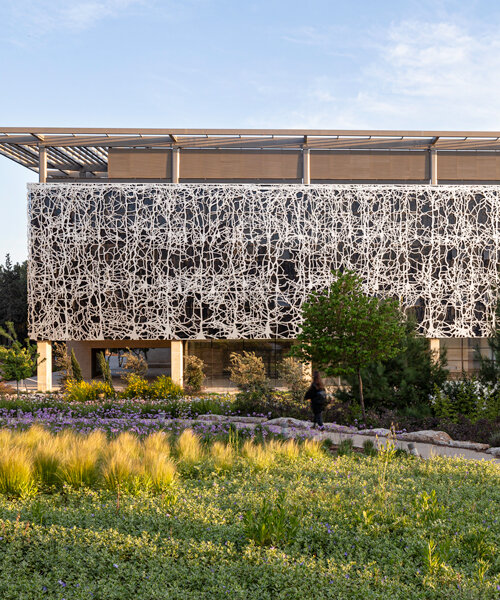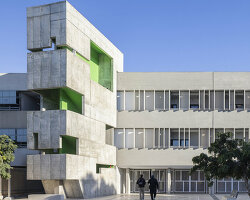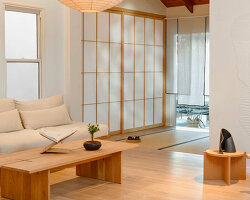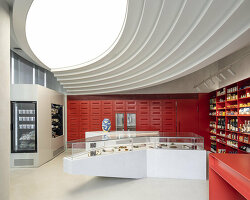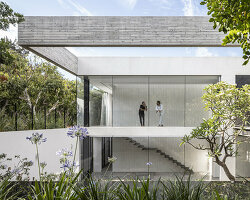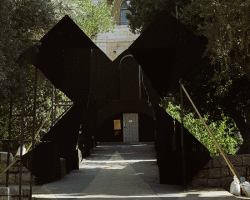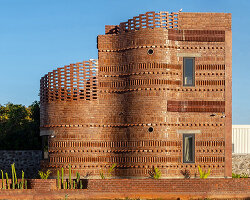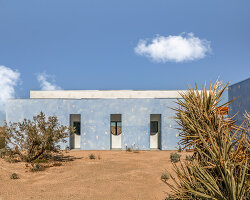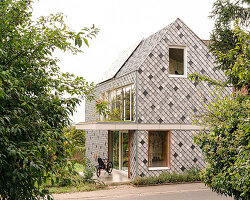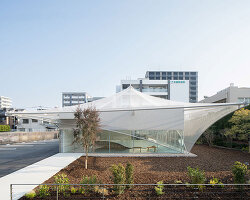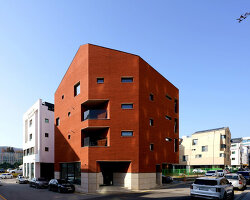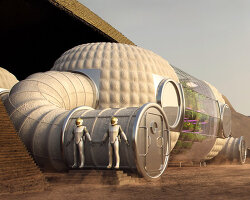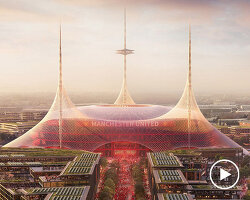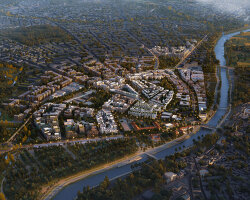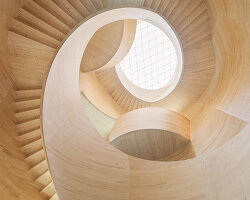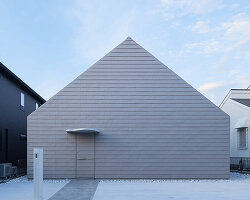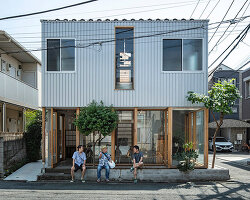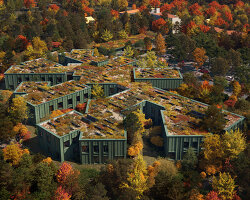foster + partners completes its edmond and lily safra center for brain sciences in the heart of the hebrew university of jerusalem. the building is at once defined by its artful facade, which sees a cast aluminum screen representing the early twentieth century drawings by spanish neuroscientist, santiago ramon y cajal, illustrating the neurological brain structure. the project stands as a future-minded research facility for the scientific exploration of the brain. it has been carefully sited amid the natural rugged setting of the campus. once the new tram link to the city center is opened, the building will mark a gateway to the university. its social spaces and laboratory facilities are designed for exceptional scientists, and seek to invite new interest in the center’s research activities within the larger community.
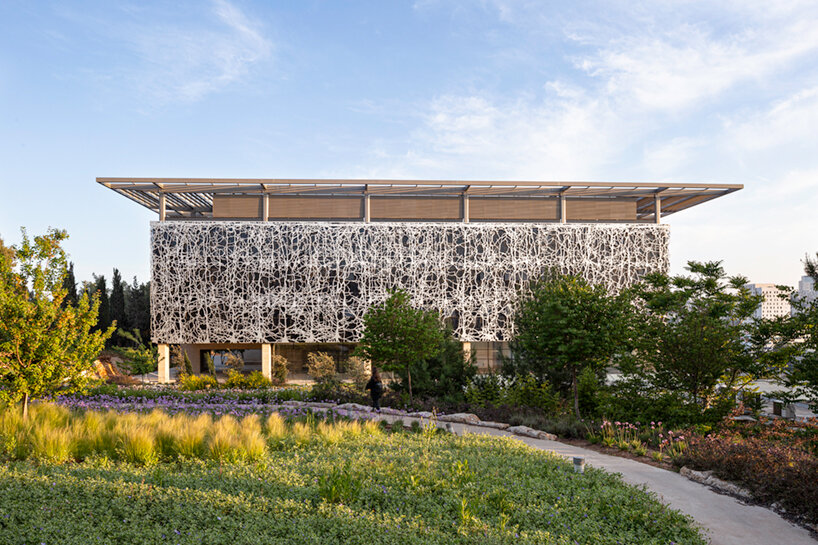
images courtesy of foster + partners
foster + partners‘ center for brain sciences is is organized as two parallel wings enclosing a central courtyard. the upper levels house twenty-eight highly flexible laboratories linked by social hubs, which encourage informal interaction and the exchange of ideas between students and staff. the ground floor hosts teaching facilities, a 200-seat auditorium, a library, café and a publicly accessible gallery for the display of art related to the brain. the courtyard at the heart of the scheme unites these different functions, establishes new circulation routes through the campus and draws the greenery of the surrounding landscape into the building. planted with citrus trees and a man-made stream along its length, the courtyard forms a quiet, reflective space and a cool microclimate, which can be further mediated by a retractable ETFE roof.
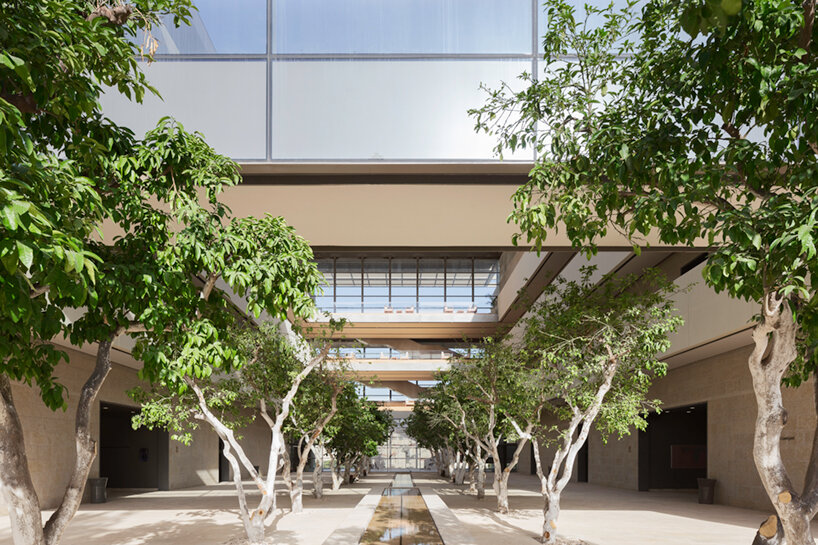
in the context of the ongoing pandemic, foster + partners’ center for brain sciences anticipates the importance of health and wellbeing. thus, the design is underpinned by the principles of biophilia. the central courtyard, open balconies and circulation all contribute towards a healthy research campus. the center’s progressive environmental strategy makes use of passive techniques to naturally reduce energy use. local materials, such as jerusalem stone, are used where possible, and the building is orientated east-west to reduce solar gain. the upper three levels are shaded by the cast aluminum facade, while further passive cooling of the building is provided by translucent ETFE canopies to the west and east, which form distinctive markers for the main entrances.
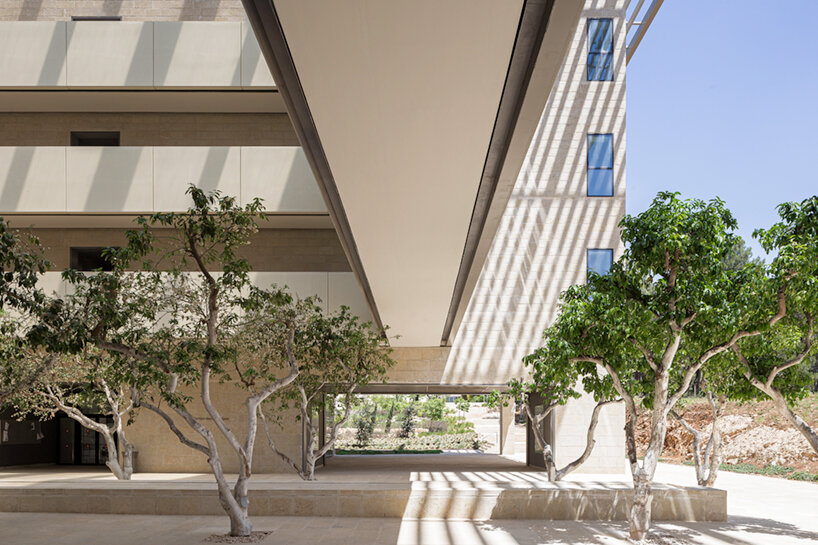
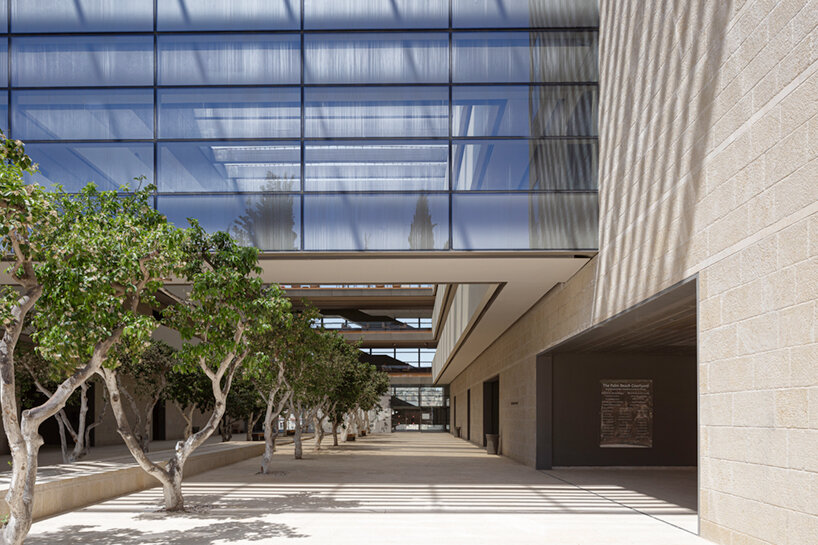
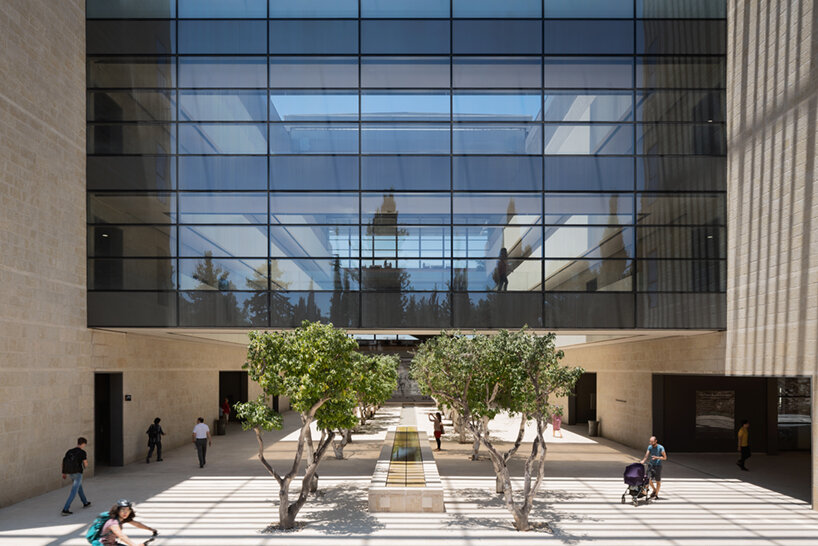
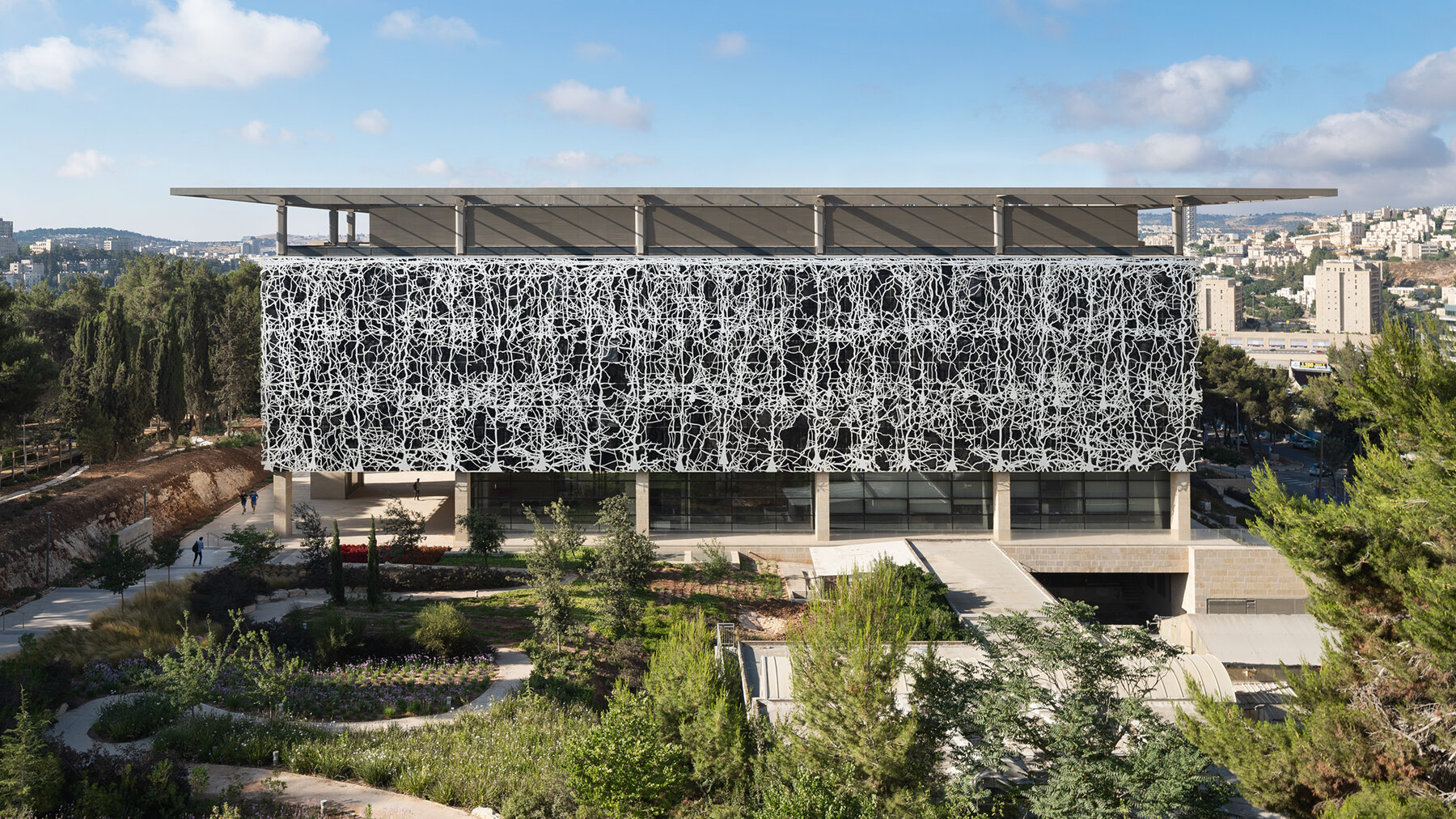

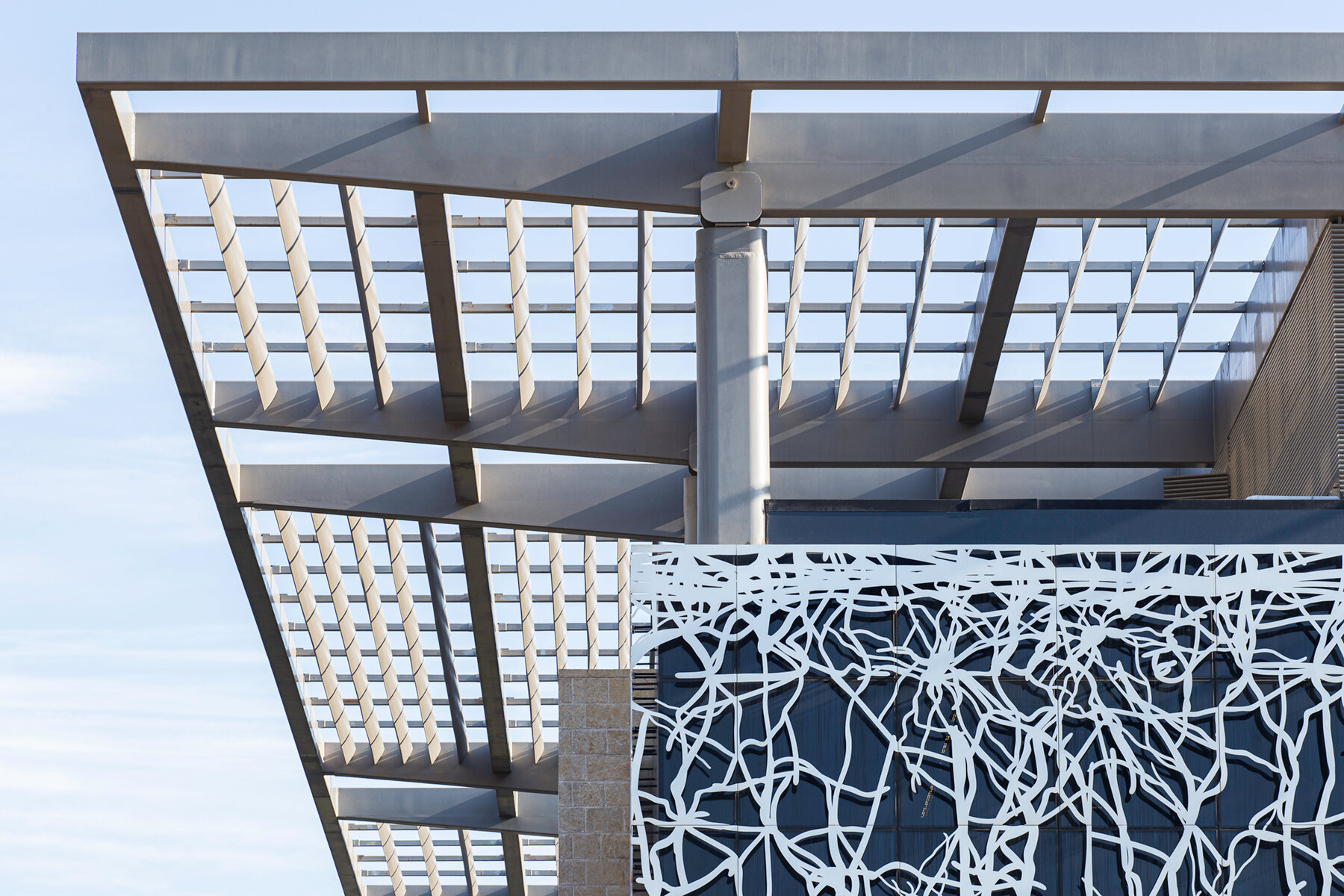
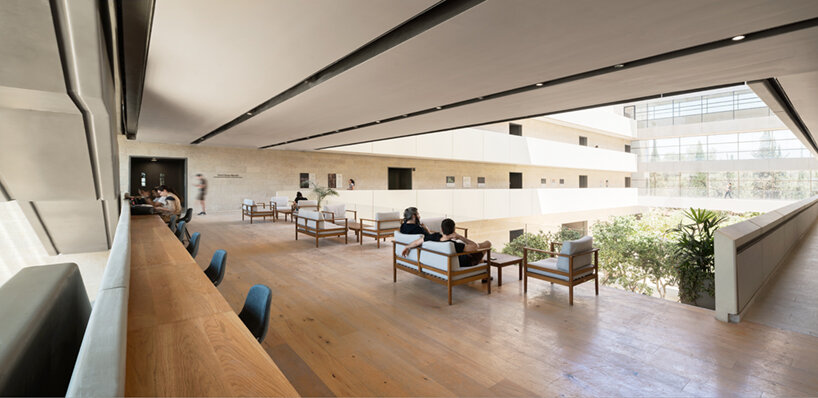
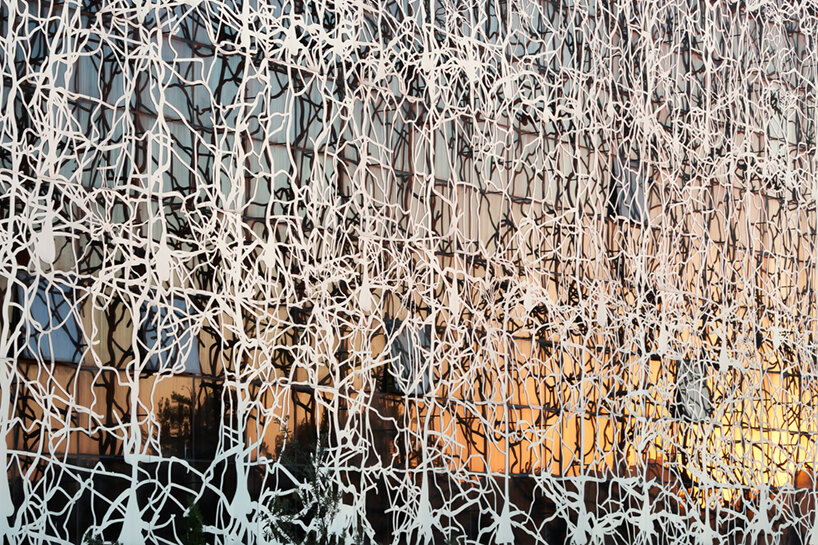
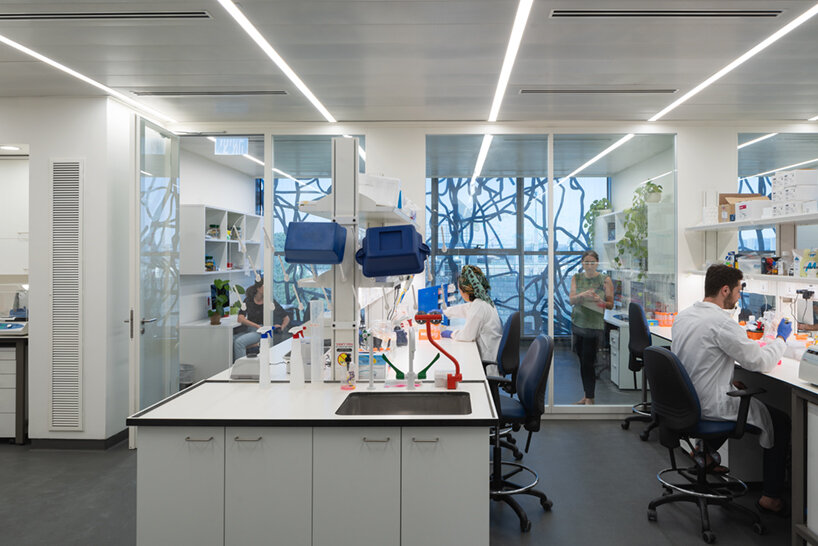
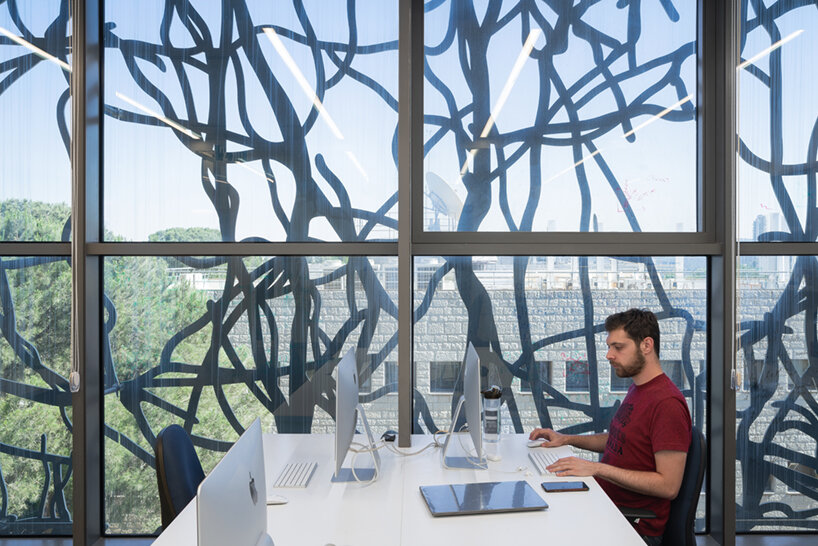
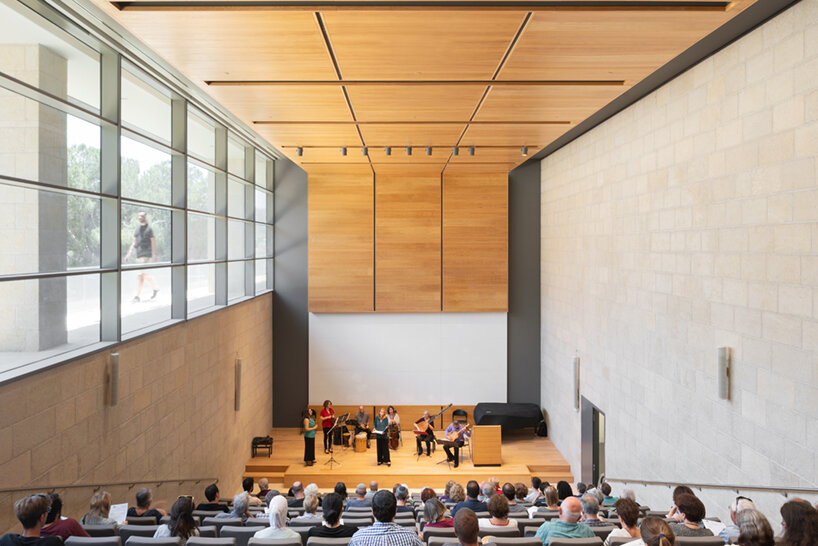
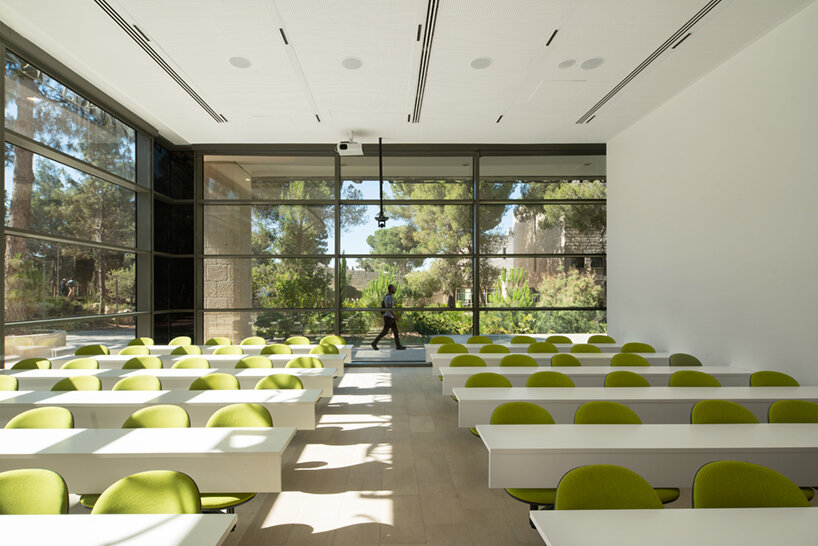





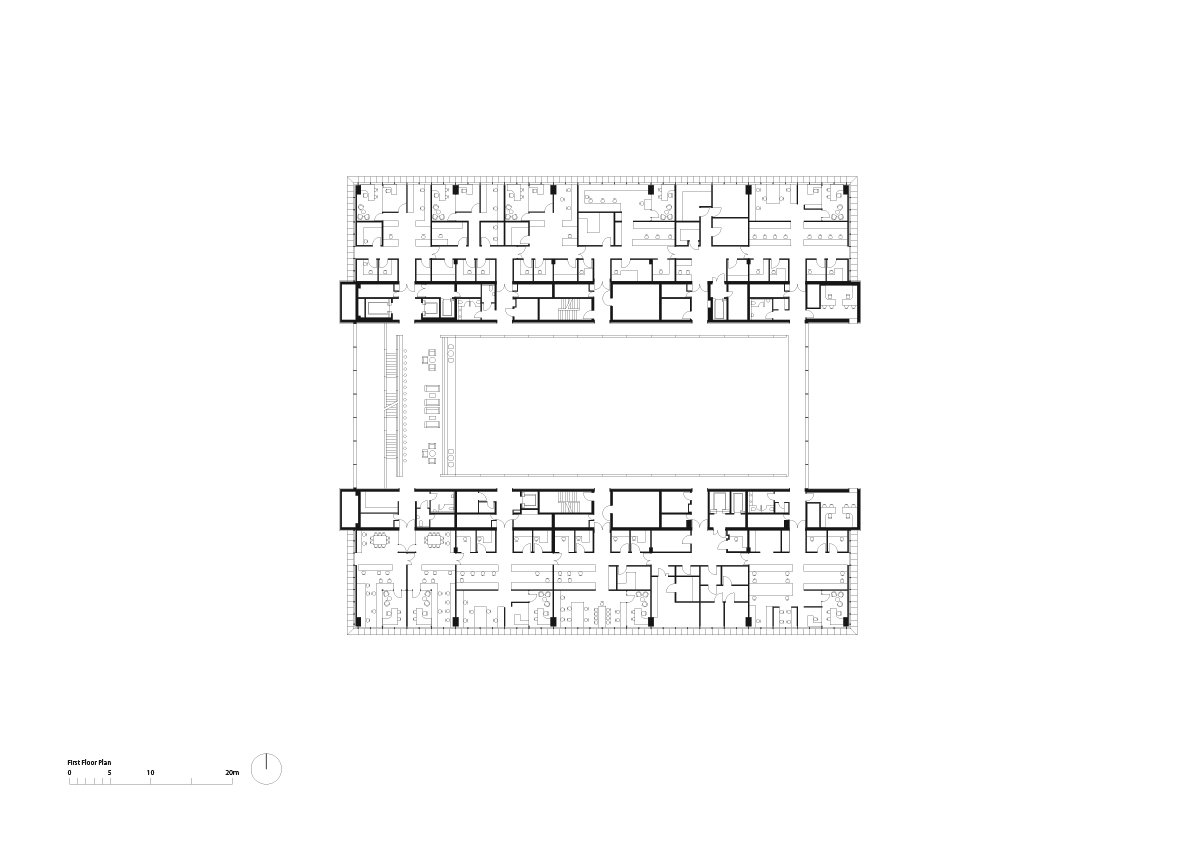

project info:
project title: the edmond and lily safra centre for brain sciences
architecture: foster + partners
location: hebrew university of jerusalem
completion: 2021
